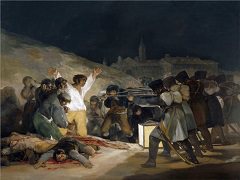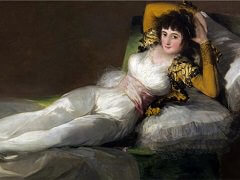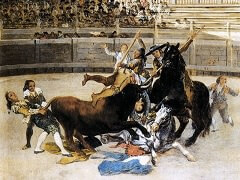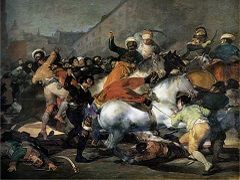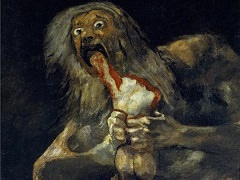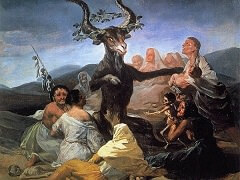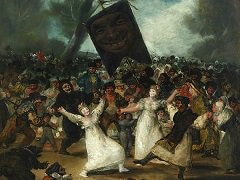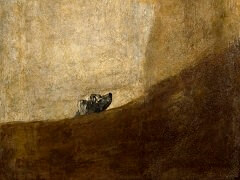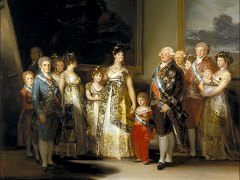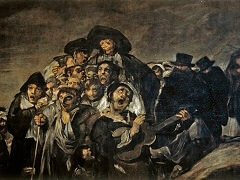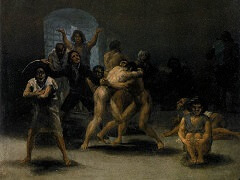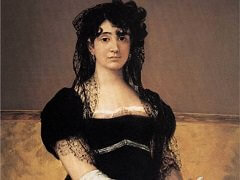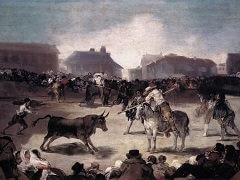The Madhouse, 1812 by Francisco Goya
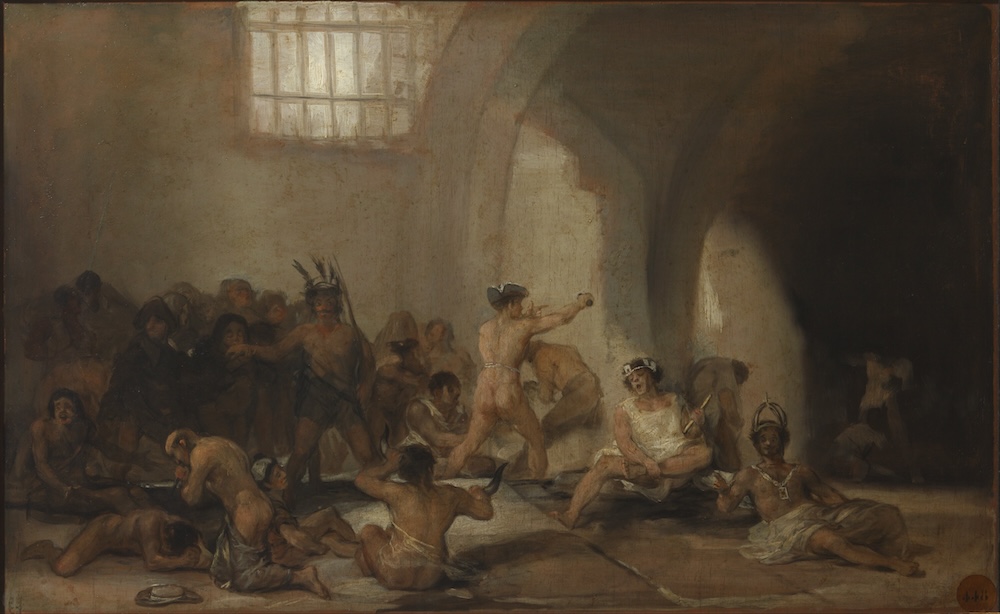
This work has the same history and dating as Plates 27, 28 and 29. In many ways this version of a lunatic asylum is more conventional than Goya's earlier eye-witness account of The Yard of a Madhouse.
It has been compared with Hogarth's scene in Bedlam in the Rake's Progress and some of Goya's deranged men, like Hogarth's, wear traditional attributes - a crown, a feathered headdress and tarot cards. But Goya's Bedlam is a much more horrifying sight, a place of darkness only partially lit, with the postures, gestures and expressions of the inmates indicating their pitiful condition. This is a dramatic and compassionate expression of the kind of scene he saw in Saragossa. Goya's life-long concern for the plight of the insane as well as of prisoners and his continued interest in the physiognomy of madness is evident from the many drawings he made of various conditions of insanity.

